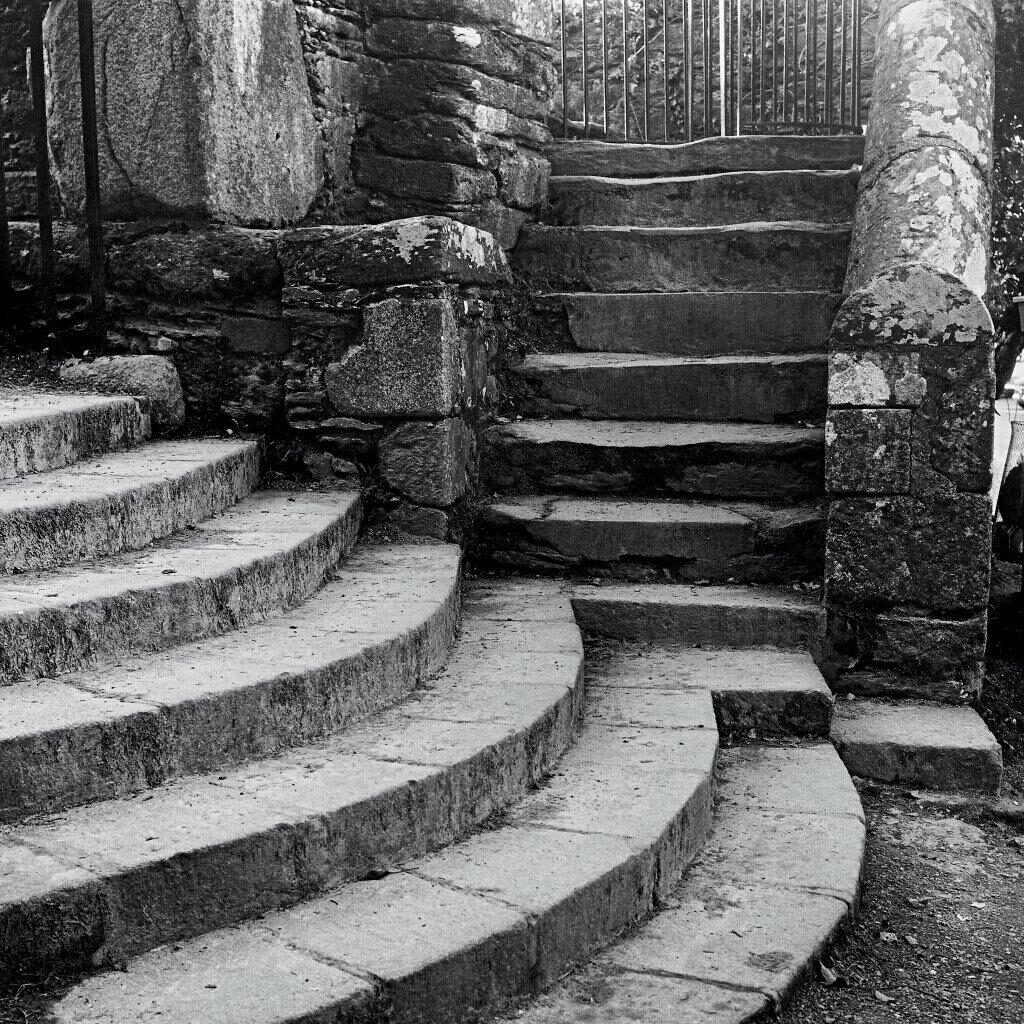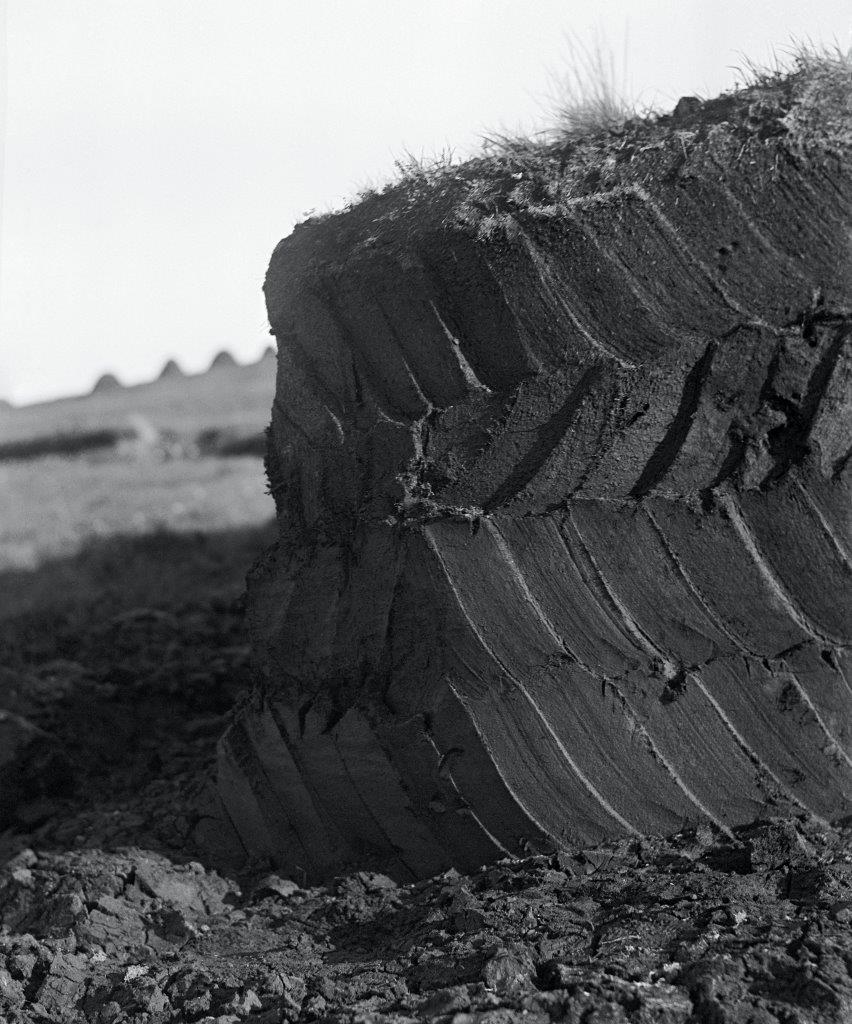Granuaile or Grace O’Malley (1530-1603) was the daughter of Eoghan Dubhara Ó Máille, the Chieftain of the O’Malley Clan in Clew Bay, Co. Mayo. She married but returned home from Connemara after her first husband was killed. He had been a chieftain of the O’Flaherty Clan. Grace established her own fleet of ships and took over at least three castle encircling Clew Bay: one on Achill Island’s Kildavnet, one on Clare Island and this one at Carraigahowley. In 1593, Granuaile met in London with another formidable woman, Queen Elizabeth I. The Irish Pirate Queen met with the English monarch to petition for the release of her imprisoned son Tibbott Burke, the restoration of his right to his ancestral lands, and for him eventually to be given the title, “Viscount of Mayo.” Granuaile succeeded. Although Helen originally photographed this site in 1939, she took this picture in 1976 after the castle had been restored.
|










